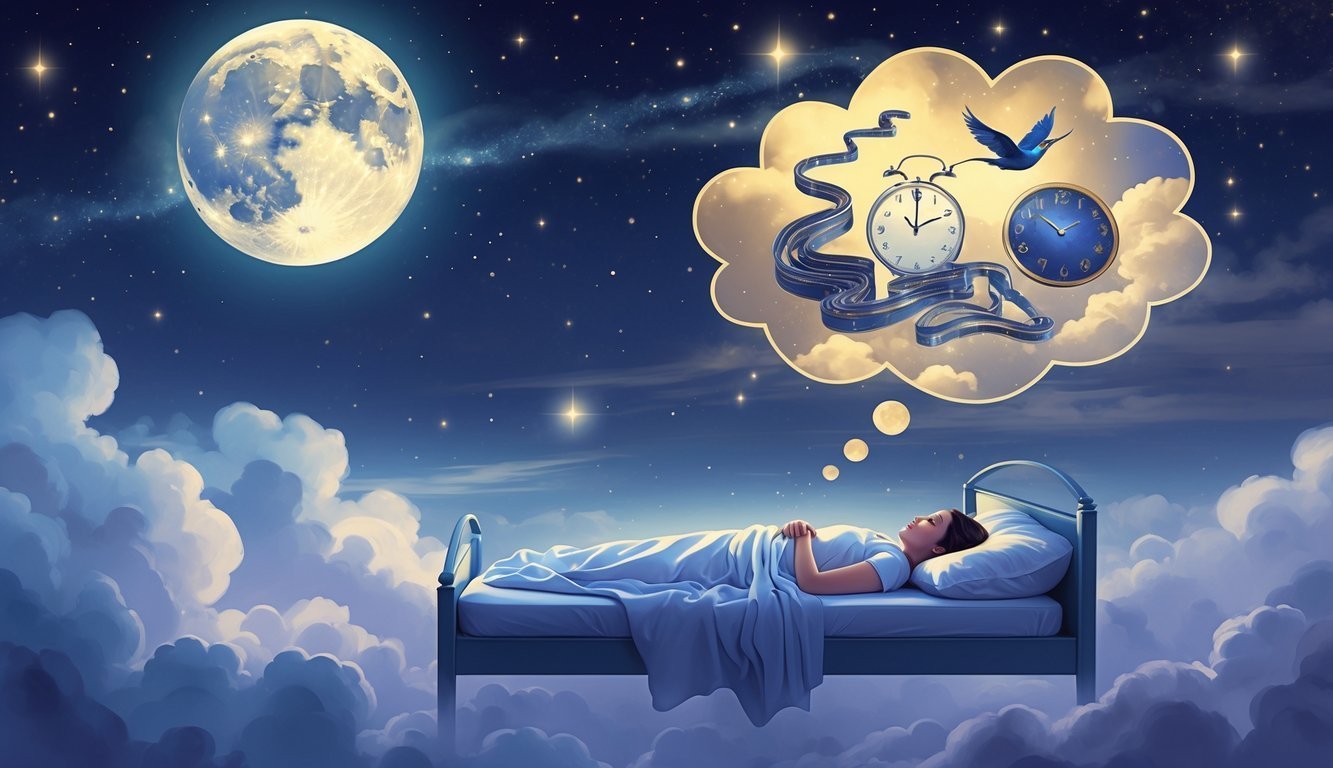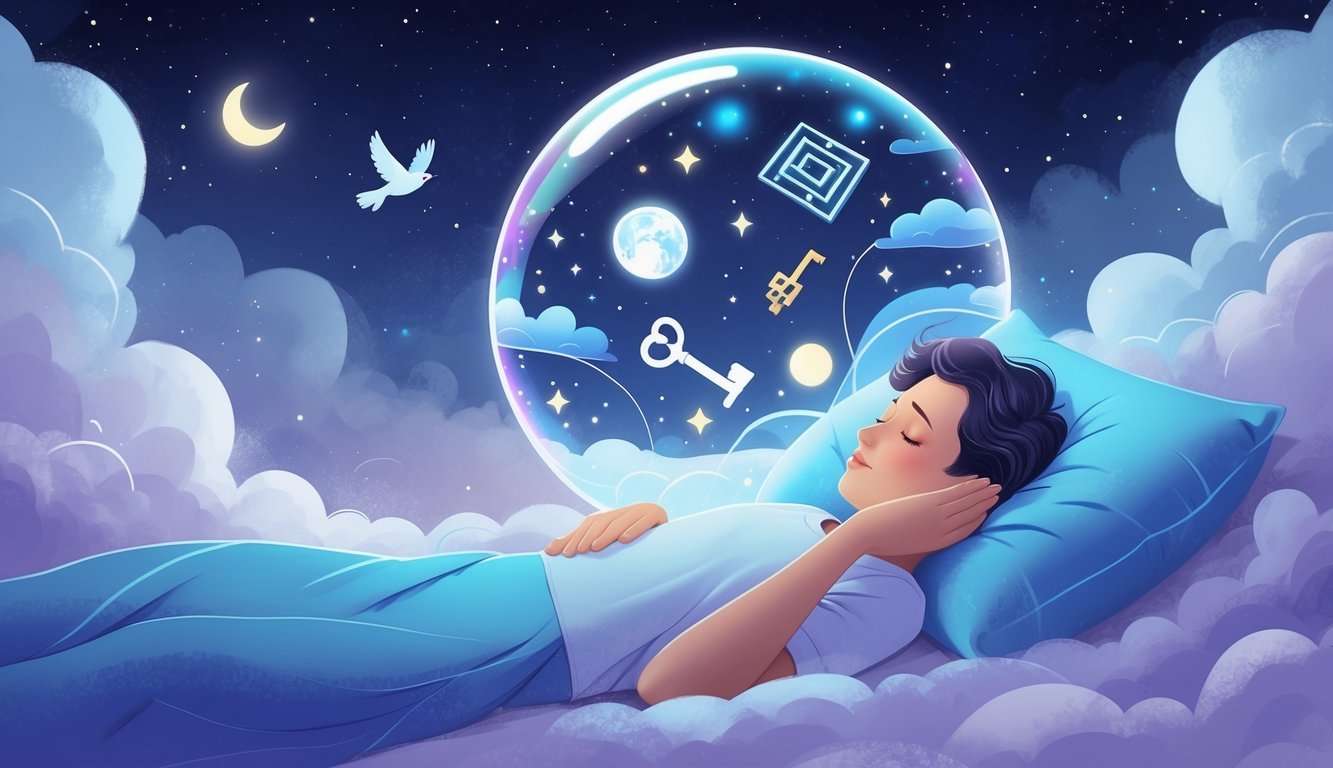PsychNewsDaily Publishers
100 Summit Drive
Burlington, MA, 01803
Telephone: (320) 349-2484
PsychNewsDaily Publishers
100 Summit Drive
Burlington, MA, 01803
Telephone: (320) 349-2484
Dreams reflect emotions and life experiences, often revealing stress, fears, or desires. Common themes include falling, being chased, or flying, each holding personal significance.

Dreams have puzzled people for centuries. Most of us wake up and wonder—what was that all about? Science still doesn’t have all the answers about why we dream, but a lot of common dreams seem connected to your emotions and everyday experiences.
Figuring out your dreams can give you surprising clues about your feelings, worries, and hopes.
Maybe you’ve dreamt about being chased, falling, or even flying. These aren’t just weird stories your brain invents for fun. They often show up because you’re stressed, facing challenges, or longing for something.
When you spot these patterns, you start to get what your brain is trying to say while you sleep.
Dream meanings aren’t the same for everyone. They change depending on your life and what you’re going through.
If you look at your dreams with an open mind, you might find some useful insights about yourself.

Dreams mix up images, emotions, and bits of your day—or sometimes just random stuff from deep in your mind. Sometimes they feel totally random, and other times they seem packed with meaning.
If you get curious about how dreams work and what they might mean, you’ll probably learn something about your own thoughts.
Scientists keep studying why we dream. What they do know is that dreams happen during a sleep stage called REM, or rapid eye movement.
Your brain gets pretty active in REM, almost like you’re awake.
Dreams help your brain sort out memories, solve problems, or handle your emotions. There’s no single answer for what every dream means, since each person’s dreams are different.
You might see yourself being chased, falling, or back at school—these are super common. But usually, they stand for feelings like stress or fear, not real events.
Your subconscious holds all sorts of feelings and thoughts you might not notice when you’re awake. Dreams can pull these hidden things up to the surface.
It’s almost like your subconscious sends you a message through your dreams. It might use symbols—like water or flying—to show you what you really feel.
If you start to recognize those symbols, you’ll get a better handle on your emotions.
Freud believed dreams reveal secret wishes or fears. Jung thought dreams connect you with your deeper self and help you grow.
Both ideas put the subconscious front and center when it comes to understanding dreams.
People have wondered about dreams for thousands of years. Ancient Egyptians and Greeks thought dreams brought messages from the gods or even glimpses of the future.
Freud was one of the first in modern times to say dreams show your unconscious mind. He saw dreams as disguised wishes.
Jung built on that and said dreams help balance your conscious and unconscious sides.
Today, people mix ancient ideas with new science. You might use a dream dictionary or just reflect on what a dream means to you.
But honestly, the meaning usually depends on your own life and feelings.

Dreams tend to pop up with certain patterns or strong feelings. They can tell you a lot about what’s going on in your head.
Some dreams, like nightmares or falling dreams, link closely to your fears or things happening in your life. Others, like lucid dreams, let you explore your mind in new ways.
When you get recurring dreams, it means the same dream—or something close—keeps coming back. Usually, that means you have feelings or problems you haven’t dealt with yet.
For example, if you keep running from someone or feel stuck in a dream, you might feel stressed or chased by something in real life.
Recurring dreams often use symbols—like doors, water, or school—that connect to your own experiences. If you pay attention to these, you can figure out what your mind is working through.
Jotting down your dreams in a notebook makes it easier to spot patterns and find meaning.
Nightmares are those dreams that leave you scared or anxious. They might involve being attacked, chased, or losing someone you love.
Nightmares usually show up when you’re feeling unsafe or worried about something.
Your brain uses these dreams to handle stress or tough emotions. If you keep having the same nightmare, it could mean you need to face a fear or problem.
Some people say talking about nightmares or relaxing before bed helps cut down on how often they happen.
Lucid dreaming is when you realize you’re dreaming while you’re still in the dream. Suddenly, you can change things—fly, explore, or face your fears.
People use lucid dreams to try new things or solve problems. It’s also a way to get to know yourself better.
Practicing lucid dreaming can boost your confidence and creativity, even when you’re awake.
Dreams about falling usually mean you feel out of control or unsure about something. They can pop up when you’re facing changes or feeling uncertain.
Dreams about death rarely mean real death. Most of the time, they signal big changes or the end of something in your life.
Some other common dreams? Flying, being late, or being back at school. Each of these has meanings tied to stress, freedom, or personal growth.
If you want, you can use a dream dictionary to look up symbols and get more ideas about what your dreams are saying.

Dreams can show all sorts of feelings and thoughts you might not notice during the day. Some dreams point to stress or hope, while others keep repeating to get your attention.
Falling in a dream usually means you’re feeling out of control. If you’re being chased, maybe you’re avoiding a problem. Flying often points to a wish for freedom or success.
If the same dream keeps coming back, your mind probably wants you to notice something. Try to remember the details and think about what’s going on in your life.
Water often stands for emotions. If your teeth fall out in a dream, it might mean you’re worried or afraid of losing something. School dreams usually connect to learning or stress about doing well.
Definitely. Dreams can show you hidden feelings, worries, or wishes you might not admit to yourself when you’re awake.
Different cultures see dreams as messages from spirits or guides. What you believe shapes how you understand your dreams and their symbols.
People everywhere seem to dream about falling, getting chased, or missing something important. These dreams usually tap into basic fears or challenges that most of us deal with at some point.